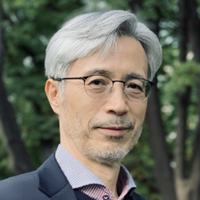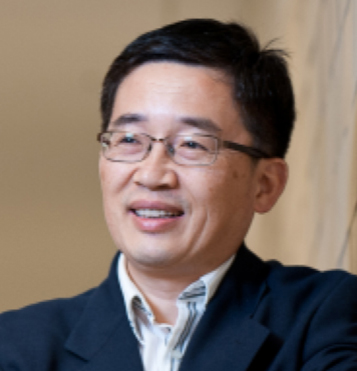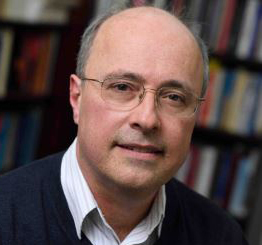Plenary Lecture
Opening lecture

- Distinguished Prof. Yoon Young Kim
- Sookmyung Women's University (Korea)
- Exotic anisotropic metamaterials for novel manipulation of elastic waves
- August 26, 09:00~10:00, Convention Hall, 5F
-
Abstract Biography
Elastic waves are critically used for non-destructive evaluations in industrial and medical fields. Because the wave field is multimodal, involving coupled longitudinal and transverse wave modes, manipulating elastic waves for specific new applications is very challenging. Here, we show that elastic waves can be manipulated unprecedentedly if engineered materials of exotic anisotropy, not found in natural materials, are elaborately used. We present the principle to “design” exotic anisotropy for wave manipulation, actual fabrication through single-phase metamaterials, and their unique applications.
Distinguished Professor (2024~), Sookmyung Women’s University
Assistant to Distinguished Professor (1991~2024), Emeritus Professor (2024), Seoul National University
President (2016), Korean Society of Mechanical Engineers
President (2018-2020), Asian Society of Struct. Multi. Optimization
Vice-President (2015~2019), Int. Society of Struct. Multi. Optimization
Co-Chair (2016), 12th World Congress on Computational Mechanics
Fellow/Member (2019~), Korean Academy of Science and Technology and Engineering & National Academy of Engineering, Korea
ASME (American Society of Mechanical Engineers) Rayleigh Lecture Award (2023)
JSCES (Japan Society for Computational Engineering and Science) Grand Prize (2022)
National Medal of Honor in Science and Technology (2021)
The Mechanical Engineer of the Year (2019)
The Rodney Hill Prize

- Prof. Yonggang Huang
- Northwestern University (USA)
- Shape programmable three-dimensional mesostructures and functional devices
- August 28, 10:20~11:20, Convention Hall, 5F
-
Abstract Biography Learn more
A rapidly expanding research area involves the development of routes to shape programmable three-dimensional (3D) structures with feature sizes in the mesoscopic range (that is, between tens of nanometres and hundreds of micrometres). A goal is to establish methods to control the properties of materials systems and the function of devices, through not only static architectures, but also morphable structures and shape-shifting processes. Soft matter equipped with responsive components can switch between designed shapes, but cannot support the types of dynamic morphing capabilities needed to reproduce continuous shape-shifting processes of interest for many applications. Challenges lie in the establishment of 3D assembly/fabrication techniques compatible with wide classes of materials and 3D geometries, and schemes to program target shapes after fabrication. In this talk, I will introduce a mechanics-guided assembly approach that exploits controlled buckling for constructing complex 3D micro/nanostructures from patterned two-dimensional (2D) micro/nanoscale precursors that can be easily formed using established semiconductor technologies. This approach applies to a very broad set of materials (e.g., semiconductors, polymers, metals, and ceramics) and even their heterogeneous integration, over a wide range of length scales (e.g., from 100 nm to 10 cm). To allow realization of 3D mesostructures that are capable of qualitative shape reconfiguration, we devise a loading-path controlled strategy that relies on elastomer platforms deformed in different time sequences to elastically alter the 3D geometries of supported mesostructures via nonlinear buckling. I will also introduce a recent work on shape programmable soft surface, constructed from a matrix of filamentary metal traces, driven by programmable, distributed electromagnetic forces that follow from the passage of electrical currents in the presence of a static magnetic field. Under the guidance of a mechanics model-based strategy to solve the inverse problem, the surface can morph into a wide range of 3D target shapes and shape-shifting processes. The compatibility of our approaches with the state-of-the-art fabrication/processing techniques, along with the versatile capabilities, allow transformation of diverse existing 2D microsystems into complex configurations, providing unusual design options in the development of novel functional devices.
Yonggang Huang received B.S. (1984) from Peking University, and M.S. (1987) and Ph.D. (1990) from Harvard University. He has taught at University of Arizona, Michigan Technological University, University of Illinois at Urbana-Champaign, and is the Jan and Marcia Achenbach Professor at Northwestern University. He has received awards for teaching and undergraduate student advising at all these universities. His current research interests include mechanics of stretchable electronics, and mechanics-guided deterministic 3D assembly. He is a member of US National Academy of Sciences, US National Academy of Engineering, American Academy of Arts and Sciences, a foreign member of Royal Society (London), Chinese Academy of Sciences, and Royal Society of Canada.
The Batchelor Prize

- Prof. Charles Meneveau
- Johns Hopkins University (USA)
- Turbulence, Macro-Vortices, and reduced flow models for wind energy applications
- August 28, 11:20~12:20, Convention Hall, 5F
-
Abstract Biography Learn more
In this presentation we provide an overview of how knowledge about turbulent boundary layer structure and statistics has had a profound impact on our understanding of wind farm performance. We discuss the asymptotic limit of the fully developed wind turbine array boundary layer in which a double-logarithmic mean velocity distribution emerges for the horizontally averaged velocity. We discuss the question of power density and stress the importance of turbulence in facilitating vertical transport of mean kinetic energy. Of direct relevance to power variability, we show how models of wave-number frequency spectra of turbulent boundary layers can be used to predict frequency spectra of fluctuating power generation of entire wind farms. Focusing on individual wake structures, we then discuss the technique of yawing wind turbines for wake steering, wherein turbine wakes can be redirected to reduce interactions with downstream turbines. The wake deflection is associated with the generation of counter-rotating streamwise vortices of very large size (macro-vortices), whose magnitude can be predicted using classical lifting line theory. Finally, we summarize continuing efforts to couple local wake models with global boundary layer models in new-generation analytical wind farm models, and close by stressing the importance and continued need for reduced analytical models of flow phenomena affecting various aspects of wind energy.
Charles Meneveau is the Louis M. Sardella Professor in the Department of Mechanical Engineering and is Associate Director of the Institute for Data Intensive Engineering and Science (IDIES). He holds joint appointments in the JHU Department of Physics and Astronomy and of Environmental Health and Engineering. His area of research is focused on understanding and modeling hydrodynamic turbulence, and complexity in fluid mechanics in general. The insights that have emerged from Professor Meneveau’s work have led to new numerical models for Large Eddy Simulations (LES) and applications in engineering and environmental flows, including wind farms. He also focuses on developing methods to share the very large data sets that arise in computational fluid dynamics. He received his B.S. degree in Mechanical Engineering from the Universidad Técnica Federico Santa María in Valparaíso, Chile, in 1985 and advanced degrees from Yale University. He then was a postdoctoral fellow at the Center for Turbulence Research at Stanford and has been on the Johns Hopkins University faculty since 1990. Prof. Meneveau is Deputy Editor of the Journal of Fluid Mechanics and has served as the Editor-in-Chief of the Journal of Turbulence until 2015. Professor Meneveau is a member of the US National Academy of Engineering, a foreign corresponding member of the Chilean Academy of Sciences, a Fellow of APS, ASME and AAM, and the recipient of an honorary doctorate from the Danish Technical University, of the Corrsin Award from APS, and of the 2021 Fluid Dynamics Award from AlAA.
Closing lecture

- Prof. Gareth H. McKinley
- Massachusetts Institute of Technology (USA)
- Spatiotemporal Signatures of Elasto- inertial Turbulence (EIT) in Complex Fluids
- August 30, 14:00~15:00, Convention Hall, 5F
-
Abstract Biography
The addition of small amounts of polymers to a Newtonian solvent makes a fluid viscoelastic and can lead to significant viscous drag reduction in high-speed flows. The interaction of viscoelasticity and inertia in a dilute polymer solution results in the emergence of unique inertioelastic instabilities that are still far from being understood. The nonlinear evolution of these instabilities engenders a state of turbulence with significantly different spatiotemporal features compared to Newtonian turbulence, commonly termed elastoinertial turbulence (EIT). We systematically explore EIT by studying the dynamics of low-speed submerged jets of dilute aqueous polymer solutions injected through a nozzle into tanks of quiescent water or polymer solution.
Gareth H. McKinley FRS is the School of Engineering Professor of Teaching Innovation and former Associate Head and Interim Head of the Department of Mechanical Engineering at MIT. His research interests include extensional rheometry, microfluidic rheometry and non-Newtonian fluid dynamics. He is the author of over 370 technical publications and has won the Publication Award of the Society of Rheology twice (2007; 2022) as well as the 2021 Walters Award from J. Non-Newtonian Fluid Mechanics. He was awarded the Bingham Medal of The Society of Rheology in 2013, the Gold Medal from the British Society of Rheology in 2014 and the G.I.Taylor Medal from the Society for Engineering Science (SES) in 2022. In 2019 he was elected to the National Academy of Engineering and also inducted as a Fellow of the Royal Society of London. He was awarded an honorary doctorate from KU Leuven in 2023, and in 2024 was elected as a corresponding member of the Australian Academy of Sciences.